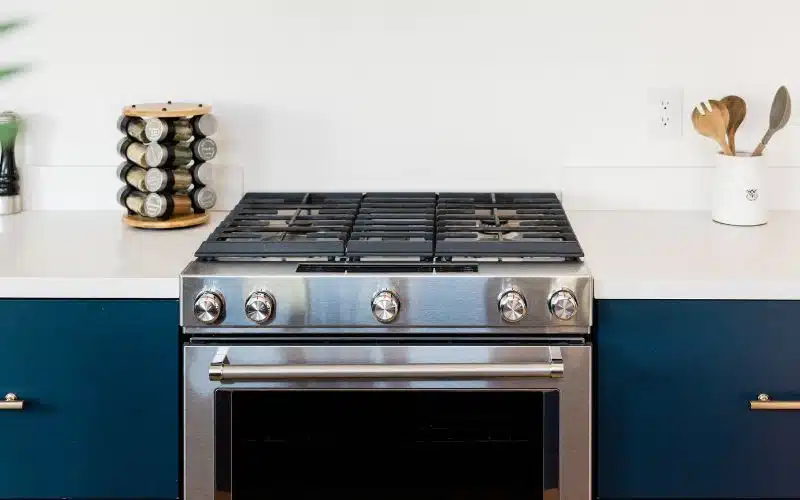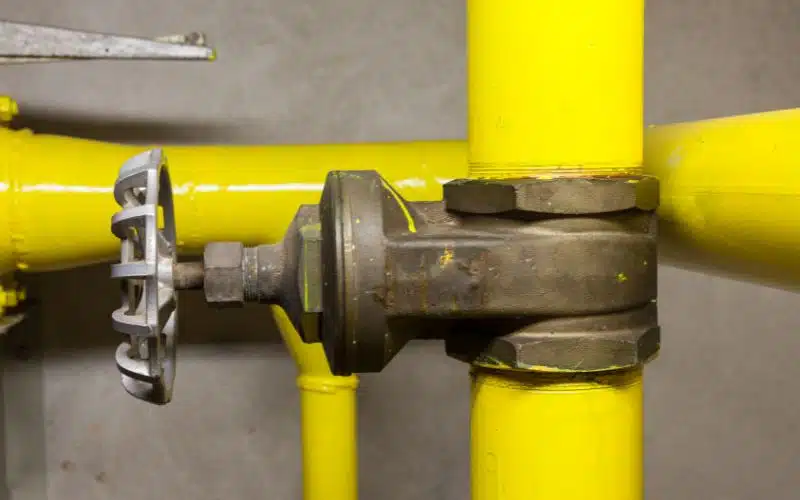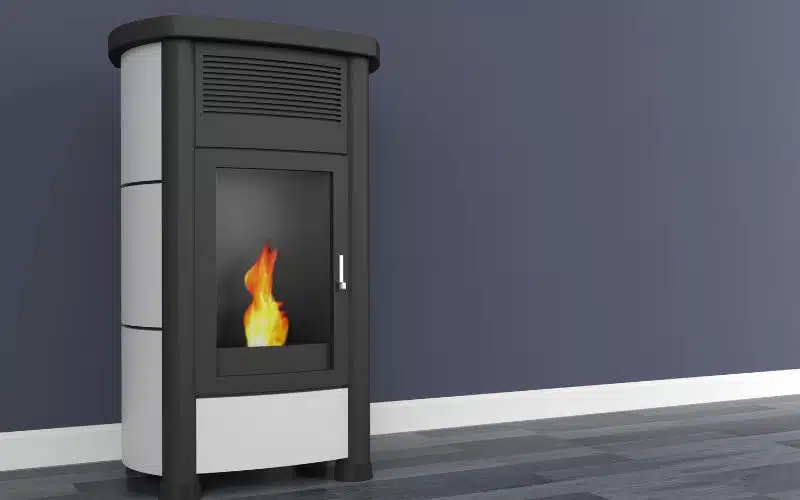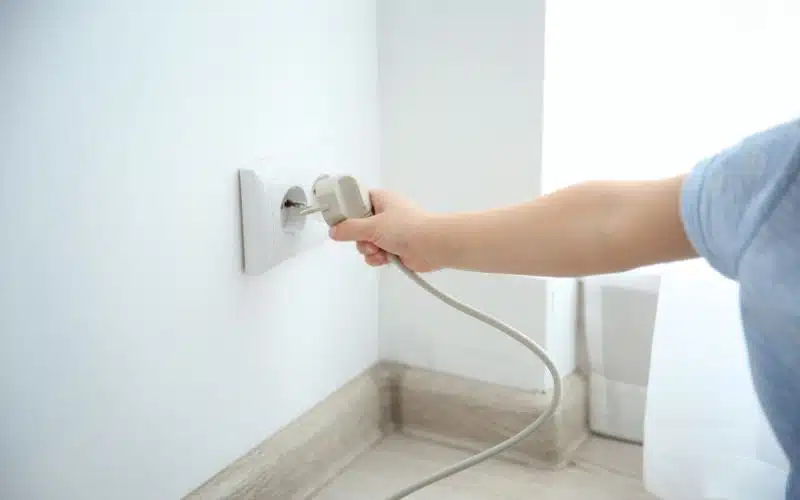Kenmore stoves have a special part called a fuse. It’s a safety feature that protects the stove from too much electricity.
In this article, we’ll learn about how the fuse in a Kenmore stove works and why it’s important for safety. Let’s dive into the world of stove fuses!
Key Takeaways: Does A Kenmore Stove Have a Fuse?
- Safety Feature: Kenmore ovens include a thermal fuse as a critical safety feature, protecting against overheating.
- Fuse Location: Typically located on the control board, inside a plastic tube, and accessible by removing the oven’s back panel.
- Indications of a Blown Fuse: A dark, broken fusible link visible through the oven glass window, or a continuity test showing no continuity.
- Replacing the Fuse: Ensure the stove is unplugged and cool, remove the back panel to access the fuse, disconnect the wires, and replace with a fuse of the same amperage rating.
- Precaution: Always disconnect the oven from power before inspection or repairs, and consult a professional if unsure.
Does Kenmore Stove Have a Fuse?
Kenmore ovens are designed with safety in mind and include a key feature: the thermal fuse.
This fuse acts as a safeguard, protecting your stove from potential overheating. Typically, you’ll find these fuses nestled within the oven control board.

Fuses are very important in electrical devices like your Kenmore oven. They help stop accidents caused by electricity.
Companies that make these ovens, such as Whirlpool, use special fuses called thermal fuses.
These fuses have parts that melt quickly if it gets too hot. This stops the circuit and keeps the temperature from getting higher.
quick facts about the thermal fuse in your Kenmore oven:
- Location: Often housed inside a plastic tube in the oven’s rear panel.
- Accessibility: The back panel of most ovens is removable with basic tools.
- Visibility: If the fuse blows due to excess electrical power, you might see a dark, broken fusible link through the oven glass window.
- Intact fuse: A functioning fuse will have an unbroken link, indicating no overload has occurred.
If your Kenmore oven abruptly stops working, the fuse might be the culprit, especially if caused by an electrical overload.
If you’ve never checked your oven’s fuse before, here’s how to locate it:
- Look for the oven control board: The fuse is often attached to or inside it.
- Check the oven’s back panel: Remove the panel to inspect the thermal fuse’s plastic tube.
Understanding the function and location of the thermal fuse in your Kenmore oven is essential for troubleshooting and maintenance.
You now have the information needed to inspect the fuse if your oven stops working unexpectedly.
Kenmore Stove Fuse Location
If your Kenmore oven stops working, it’s often due to a blown fuse. Kenmore ovens typically have the fuse located on the control board.
It’s protected by a transparent plastic tube, although this isn’t always the case. For instance, in a range wall oven, you might find the thermal fuse beneath the cooktop.
Finding the Oven’s Fuse:
- Remove the control panel to access the fuse on the control board.
- If your model is a range wall oven, lift the cooktop for the thermal fuse beneath.
Additional Fuse Information:
- Some Kenmore ovens may also feature a thermal breaker that can trip, causing oven malfunctions.
- In cases where the oven isn’t at fault, check the oven’s plug for a fuse.
Fuse places can change depending on the model, and past fixes might move them. If you can’t find the fuse with these steps, check your stove’s manual.
It has a picture showing where the fuse is. Always unplug your oven and disconnect the power cord from the outlet before checking fuses to avoid electric dangers.
How Do I Know If My Stove Fuse is Blown?
Visual Inspection:
- Check if the fusible link is intact through the glass window.
- A blown fuse will show a broken or darkened metal link.
Using a Multimeter:
- Set the multimeter to continuity test mode.
- Attach one lead wire to the threaded base and the other to the metal tip of the fuse.
Last update on 2024-01-10 / Affiliate links / Images from Amazon Product Advertising API
Interpreting Multimeter Results:
- A good fuse will show continuity; the circuit is complete.
- No continuity indicates a blown fuse.
Signs of a Blown Fuse:
- Overheating can cause a fuse to blow.
- Electrical problems like a short circuit can lead to a blown fuse.
Troubleshooting Steps:
- Switch off the appliance and disconnect it from the power source.
- Locate and inspect the fuse for any visible signs of damage.
- If suspicion arises, use a multimeter for a more precise test.
- If the test results indicate no continuity, the fuse is blown and needs replacement.
Note on Multimeters:
- A high-quality multimeter is recommended for accurate results.
- Multimeters can test for both AC and DC and measure continuity.
Preventing Fuse Blows:
- Avoid circuit overloads as they can cause fuses to blow.
- Regularly troubleshoot electric appliances to prevent electrical surges.
Remember to always check for safety hazards and consult a professional if you are unsure about handling any electrical troubleshooting on your own.
How Do You Change a Fuse in a Kenmore Stove?
To fix a Kenmore stove with a broken thermal fuse, follow these steps. First, make sure the stove is unplugged and cool.
Remove the stove from its place. Open the oven door and take out the screws that hold it in the cabinet.
Slide the oven out a bit. Next, take off the back panel by removing its screws. This shows the inside parts, including the thermal fuse.
Find the broken fuse. Take off the wires from this fuse. Remove the old fuse and get a new one that has the same amperage rating.
Putting in the new fuse is simple. Connect the wires to it, matching them to the right terminals. Make sure the connections are tight and the fuse is in right.
Before you put the back panel on again, check the wiring and that there are no tools inside.
Put the back panel back on and tighten its screws. Slide the oven into its cabinet, attach it with screws, and make sure it’s in place correctly.
Now your stove should work again. Be careful when working with electrical appliances. If you’re not sure, it’s better to ask a professional for help.






